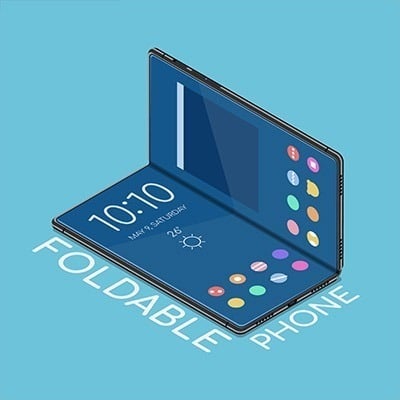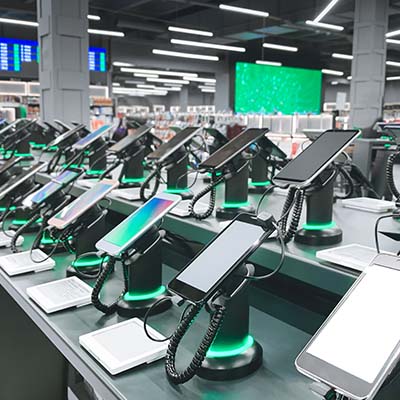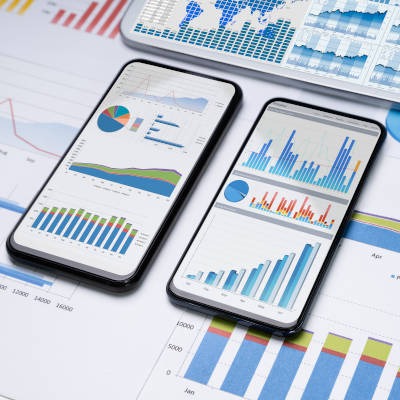For years now, cybersecurity experts have reiterated time and again that it was only a matter of time before smartphones would become a target for major cyberattacks like ransomware. The facts are that most people use smartphones and most of these devices aren’t really protected with active antivirus software. It stands to reason that ransomware is developing into a major trend in mobile cybercrime. Since ransomware is the grand-daddy of threats, keeping it off your systems is essential.
It’s only too common that, even as the screens on our mobile devices increase in size, the text displayed on them can be difficult to read. Fortunately, there is a way to fix this. Let’s go over the process involved in changing the size of the text your smartphone displays.
While there are many major flagship devices out there, some of the other top-tier innovations might also be viable devices for your organization or for your personal use. Here are some of the more innovative devices on the smartphone market today.
Sometimes the word “value” is associated with “bad,” like getting the generic brand of certain goods at the department store. However, sometimes you can get some bang for your buck, so you should at least consider some of the value options–particularly for expensive devices like smartphones.
With so many employees still working remotely, it’s easy to see how lost or stolen devices can create problems for your business. Therefore, like any security issue, it is critical to take it seriously before it happens rather than react to it as it occurs. Here are four preventative measures you can take today to decrease the odds of a lost or stolen device becoming a major problem for your business.
Over the next couple of weeks we will be looking at the smartphone market from the flagships, to innovative new devices, to the budget smartphones that can present consumers a lot of value. The Flagships Flagship smartphones are the cream of the crop—by designating a particular device as their flagship, a manufacturer is stating it’s the best-period-option-period-available-period. Every spec or component is improved as much as possible. They are the devices in demand, and as such, they’re the ones with the largest price tags. It isn’t uncommon for many of today’s flagships to out-spec many PCs. This is simply because mobile computing is the new default for many. Whether they’re creating content, using an app, or whatever, people are going to want a device that can do what they need it to do, when they want to do it. This is why flagship devices are produced. Here are the ones coming out from now until the holidays: iPhone 12 Pro Max As the first official smartphone manufacturer on the market, Apple has always proven itself a contender. This has only been reinforced over the past three years. This year’s model of their trendsetting device, the iPhone 12 Pro Max, bears the same stainless steel construction as other recent models with Gorilla Glass 6 on its front and back. The 12 Pro Max features a massive 6.7-inch Super Retina OLED display with a 1,284 x 2,778 resolution, equalling about 458 pixels per inch. The specs look just as good as the device does. The iPhone 12 Pro Max is equipped with Apple’s proprietary A14 processor, the first-ever 5 nanometer processor seen in a smartphone. While there is no expandable memory, it comes with 6 GB of RAM and up to 512 GB of onboard storage. While the 3,687 mAh battery may seem a little small, the optimization settings built into iOS 14.1 gives it enough efficiency to power through. Plugged in, the device has 20 watt fast charging and 15 watt wireless Qi charging. As for cameras, the iPhone 12 Pro Max features a similar set as its 11 counterpart with three 12 megapixel lenses, but with the added photo depth benefits of an added Time of Flight sensor. Coming the second week of November 2020, the iPhone 12 Pro Max will be available in Silver, Graphite, Gold, and Pacific Blue. Apple iPhone 12 Pro Max Body: Stainless Steel with Gorilla Glass 6 Display: 6.7-inch Super Retina OLED (~458 ppi) OS: iOS 14.1 Chipset: A14 Bionic Memory: 6 GB RAM, up to 512 GB onboard storage Expandable Memory: No Cameras: Rear: 12 MP (wide), 12 MP (ultra wide), 12 MP (telephoto) 2.5x Front: 12 MP (wide) Sounds: Stereo Speakers, no headphone jack Battery (battery endurance rating): 3,687 mAh (~100 hours) Security: Face ID Miscellaneous: Accelerometer, Gyrometer, Proximity, compass, barometer, Siri assistant, IP68 dust/water resistant Other versions: iPhone 12 Mini, iPhone 12, iPhone 12 Pro OnePlus 8 Pro The OnePlus 8 Pro is the first real flagship model built by a Chinese device manufacturer with a growing market share in the west. Coated front and back in Gorilla GLass 5 and built on an aluminum frame, the OnePlus 8 Pro is built with ergonomically-friendly curves. WIth a 6.78-inch AMOLED display, it can hold its own comfortably with the flagships from Apple and […]
Optimize Your Apps How many applications do you currently have installed on your phone? Of those, how many do you actually use? Chances are, there are a lot of apps that no longer serve you any purpose that are just sitting on your phone, cluttering your application drawer and drawing attention away from the tools you need. Our recommendation here is twofold: first, do some spring cleaning and delete some of the applications that you just don’t use any longer. They aren’t doing you any good, anyway, and they are only taking up valuable storage space on your device. Second, take the time to organize your device, arranging apps on different screens. This will help you to stay focused on the task and hand, without your social media accounts or the silly mobile game you downloaded drawing you away – there is nothing wrong with having them, as long as they don’t impact your work. Disable Certain Notifications Speaking of your social media (and of being drawn away from your responsibilities, for that matter), there is no need that you need to know that one guy you met at a mutual friend’s party has liked your status during work hours. The same goes for the silly mobile games. Who cares that your energy has recharged and that “your kingdom needs you?” You have real work to do! The notifications that these applications send us are meant to be disruptive, to put the task at hand to the side as you follow the application where it takes you. Turning off notifications takes a lot of power away from distracting applications simply by preventing temptation. Disconnect Depending on the task at hand, it may even be a good idea to disconnect your phone for a few moments’ peace. Of course, if you’re expecting important phone calls to be coming in, this is a bad strategy to try out. Otherwise, kill your phone’s Internet and wireless connections, and consider putting on some headphones to make your focused attention clear to anyone around you. Keep It Updated Of course, for your mobile device to be able to work productively, its software needs to be vetted and maintained. Make sure you actively apply updates and patches over time to ensure that your device remains in good working order. Your IT resource will be a useful ally to lean on where this is concerned. What has your experience been with smartphones in the workplace? Share your thoughts in the comments!
Samsung Galaxy s10 Plus Widely regarded as the best phone on the market, the Samsung Galaxy s10 Plus improves on the remarkable Galaxy s9 Plus across the board; improving on form factor, processing, camera, and battery. The device is Gorilla Glass 5 on top of an aluminum frame and weighs in at 6.17 oz. The display comes in at 6.4 inches and uses most of the phone’s available real estate. The form factor of the device has had a bit of a renovation, featuring sharper edges than previous models. Inside the device, the Galaxy s10 Plus has a Qualcomm Snapdragon 855 processor with 8-to-12 GB of RAM and storage capabilities that range from 128 GB to a full terabyte. The Galaxy s10 Plus features three rear-facing cameras, including a wide angle, ultra wide angle, and a telephoto option. Samsung also increased the battery to a solid 4,100 mAh. It is shipped with Android 9 Pie, but some carriers already deliver an upgrade to Android 10. Available in Prism White, Prism Black, Prism Green, Prism Blue, Canary Yellow, Flamingo Pink, Ceramic Black, Ceramic White, Cardinal Red, and Smoke Blue this device can be had on most carriers for between $799 and $1,199. Samsung Galaxy s10 PlusBody: Aluminum frame with Gorilla Glass 6 front, Gorilla Glass/Ceramic backDisplay: 6.4-inch Dynamic AMOLED (~522 ppi)OS: Android 9.0 with Samsung One UI skinChipset: Qualcomm Snapdragon 855Memory: 128 GB/8 GB RAM; 512 GB/8GB RAM; 1 TB/12GB RAMExpandable Memory: microSD up to 1 TBCameras: Three back-facing (12 MP, 26mm wide angle; 12 MP, 52mm telephoto; 16 MP, 12mm ultrawide); Two front-facing (10 MP, 26mm; 8 MP, 22mm)Sounds: Stereo speakers, 3.5mm headphone jackBattery (battery endurance rating): 4,100 mAh battery (91 hours)Security: Ultrasonic, under display fingerprint reader; IP 68 resistantMiscellaneous: Nano-SIM, Wi-Fi 6, Bluetooth 5.0, 15W fast charging, wireless charging, reverse wireless charging, NFC, FM RadioOther versions: Samsung Galaxy s10, Samsung Galaxy s10e Apple iPhone 11 Pro Max This year Apple’s flagship is called the iPhone 11 Pro Max and it continues Apple’s dedication to creating elite-level smartphone experience. The iPhone 11 Pro Max is glass front and back, built on a stainless steel frame and providing users a 6.5-inch Super Retina display. Inside the device there is Apple’s proprietary A13 Bionic chip, four GB of RAM, and either 64 gigabytes or 512 gigabytes of onboard storage. The biggest improvement over the iPhone XS are the cameras. Users will have the use of three 12-megapixel lenses including an ultra-wide angle lens, a wide angle lens, and a telephoto lens. The device runs on the iOS 13 operating system and can be had from most major carriers in Space Gray, Gold, Silver, and Midnight Green for around $1,100. Apple iPhone 11 Pro MaxBody: Stainless steel frame with glass front/backDisplay: 6.5-inch Super Retina XDR OLED; 1,242 x 2,688 (~458 ppi)OS: iOS 13Chipset: Apple A13 BionicMemory: 64 GB/4 GB RAM; 256 GB/4 GB RAM; 512 GB/4GB RAMExpandable Memory: NoneCameras: Three back-facing (12 MP, 26mm wide angle; 12 MP, 52mm telephoto; 12 MP, 13mm ultrawide); Two front-facing (12 MP, 23mm; SL 3D camera)Sounds: Stereo speakersBattery (battery life): 3,969 mAh (102 hours)Security: Face ID, IP 68 resistant Miscellaneous: Nano-SIM, Wi-Fi 6, Bluetooth 5.0, 18W fast charging, wireless charging, NFCOther versions: Apple iPhone 11, Apple iPhone 11 Pro Samsung Galaxy Note 10 Plus Years away from the […]
There are only a few major smartphone manufacturers as the technology needed to make (and distribute) them takes a lot of capital. These major manufacturers are mostly from Asia, but have parts made in different locations all over the world. The modern smartphone features near-ubiquitous connectivity, desktop-like processing power, and enough storage to facilitate the millions of applications that are constantly being developed for the two main OSs. The best ones feature mics and speakers that are protected from water and sand, multiple cameras that are capable of 4K video, and batteries that only slowly degrade and can be active for half-a-day on a single charge. What’s worse, these manufacturers are doing it at a time when the devices they’ve created last a few sales cycles and result in their margins noticeably shrinking. This has created less competition at the top of the market, with more people using devices manufactured by a limited amount of companies. Smartphone Markets A brief look at the global smartphone market will show you that there are now only six manufacturers with a market share of eight percent or more. They are Samsung, Apple, Huawei, Xiaomi, Oppo, and Vivo. Most of these manufacturers service emerging or Asian markets, while Apple and Samsung are the only truly global brands. In the United States, Apple is the largest distributor of smartphones with a 41 percent market share, with only Korean manufacturers Samsung (21 percent) and LG (13 percent) holding more than 10 percent of the market. Things are basically the same in much of the English-speaking world. In the UK and Australia, Apple comes in with 49 percent and 55 percent of the market share, respectively. Samsung is a distant second with 29 percent and 22 percent, respectively. In mainland Europe, however, Samsung’s market share is nearly twice Apple’s. Overall there are over 1.5 billion smartphones shipped every year for a market that is now at nearly three billion people. 82 percent of people in the UK and 77 percent of Americans own one. Predictably, China is actually the largest smartphone market with nearly 800 million smartphone owners. Conversely, there are some places where smartphone adoption hasn’t reached high percentages. Despite having nearly 1.4 billion people, the smartphone ownership rate in India is only around 28 percent. Other potential growth markets include Indonesia (27 percent), Pakistan (14 percent), and several coastal African nations (6-to-13 percent). Innovation of the Modern Smartphone Steve Jobs is roundly credited as the “inventor” of the smartphone. Whether this is true or not is up for debate, but people in-the-know about such things say that companies were working on something like this for a decade leading up to the iPhone’s 2007 launch date. Apple’s iPhone was the first smartphone to market, but even though it was only a dozen years ago now, the devices have changed precipitously. Innovation of technology (and of the devices) has been a major driving force in pushing the use of devices. As we stated earlier billions of people actively use (and periodically purchase) smartphones and they are always looking for new ways to use their devices. So while the fundamental technologies found inside these devices have been pretty static, any new tools, and improved specifications show up on all manufacturer flagships eventually. The best phones are no longer […]
In order to get the most utility out of your smartphone, you need to be certain that it is protected from the influence of these threats. For this week’s tip, we’ve put together a list of standards that you (and anyone else associated with your business) should uphold. Protect Your Device by Locking It Let’s begin with a very basic security concept: a device that is locked (and requires a code to be reopened) is going to be inherently more secure than a device that doesn’t. While that should be common sense, many people still don’t use it to their advantage – despite the unlocking process becoming easier and easier for the authorized user, with options to use fingerprints and facial recognition as a means of accessing the device. Neglecting to do so means that you are leaving your device and the data on it at the mercy of whomever happens to walk by. Protect Your Device by Capping Wireless Connectivity Your device has plenty of ways to connect to external devices and services… trouble is, that leaves plenty of connections that a hacker could use to infiltrate your device and data. Public Wi-Fi is notorious for being a breeding ground for threats, and Bluetooth and NFC communications can easily be used to steal data. Deactivate these capabilities when you aren’t actively using them. Limit the Access Your Applications Have We’ve all been there – trying to download an application from an approved and official source (such as Google Play), when the application suddenly puts up a request for access to far more data than it should need to function properly. What gives? Here’s the thing… while the app itself may not need all the information they ask for, the developers need it if they want to sell it to advertisers or share it with social media platforms. Does that silly match-four game you downloaded really need to know who your contacts are, or hear what you’re saying all the time? Probably not, so you can deny these apps from accessing this information in your settings. Alternatively, you could also go with the nuclear option and just delete them. Keep It Updated One of the primary reasons that updates are released for operating systems is to shore up any cybersecurity issues that have been resolved since the last time the device was used. While this really does sound simple enough to accomplish, many users neglect to update their device in a timely manner, leaving them vulnerable. Be Careful with Attachments and Spam in Messaging Applications Messaging applications are very common in today’s devices, which cybercriminals have certainly noticed. This is why they use attachments in these applications to deliver their payloads to their victims, and spam messages in a similar way. Keeping to the best practices you would normally use to protect your email can keep your use of your smartphone secure as well. Following these tips will help you to keep your smartphone secure against threats, and by extension, your business. For more means of securing your technology, reach out to the experts at SRS Networks. Give us a call at (831) 758-3636 to get started.
- 1
- 2









